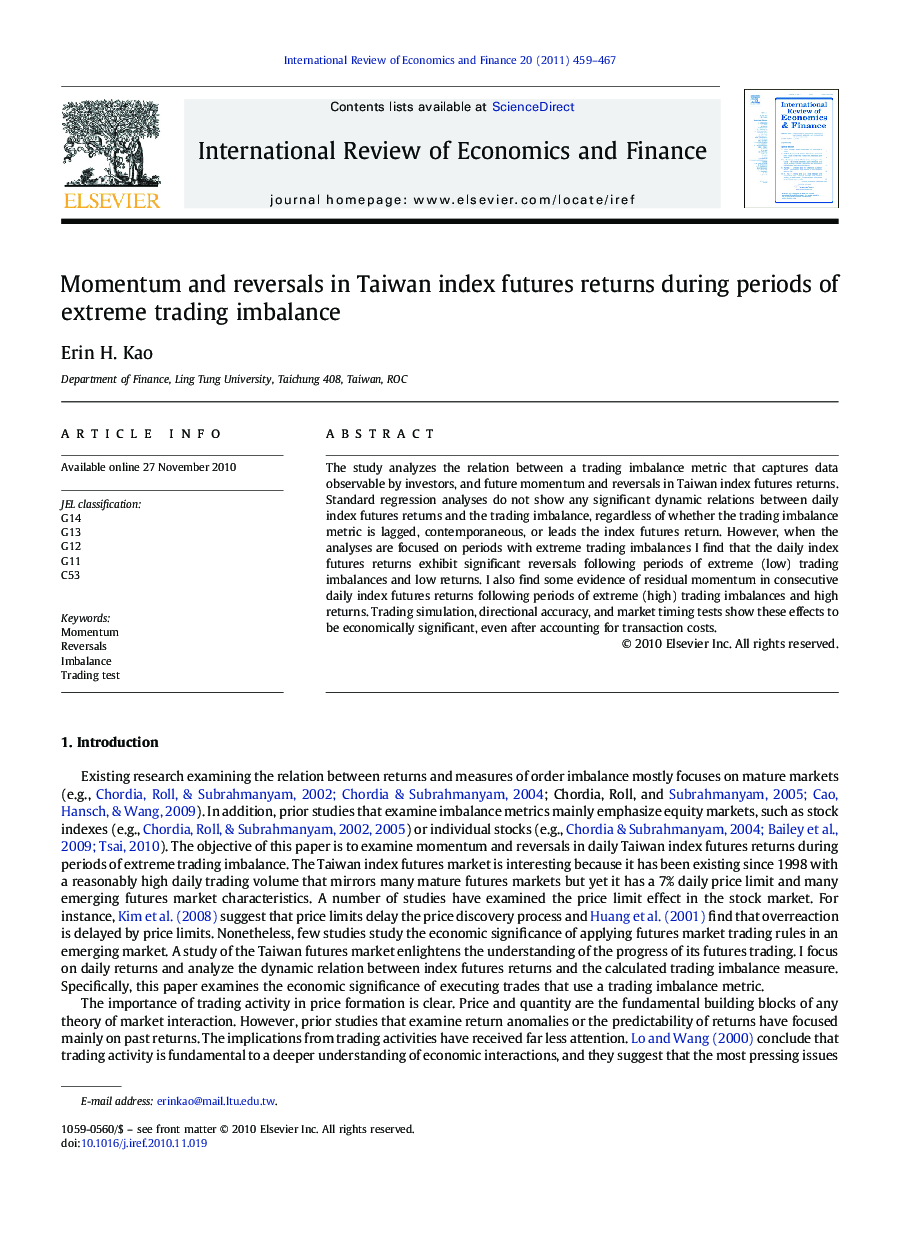| Article ID | Journal | Published Year | Pages | File Type |
|---|---|---|---|---|
| 5083966 | International Review of Economics & Finance | 2011 | 9 Pages |
Abstract
The study analyzes the relation between a trading imbalance metric that captures data observable by investors, and future momentum and reversals in Taiwan index futures returns. Standard regression analyses do not show any significant dynamic relations between daily index futures returns and the trading imbalance, regardless of whether the trading imbalance metric is lagged, contemporaneous, or leads the index futures return. However, when the analyses are focused on periods with extreme trading imbalances I find that the daily index futures returns exhibit significant reversals following periods of extreme (low) trading imbalances and low returns. I also find some evidence of residual momentum in consecutive daily index futures returns following periods of extreme (high) trading imbalances and high returns. Trading simulation, directional accuracy, and market timing tests show these effects to be economically significant, even after accounting for transaction costs.
Related Topics
Social Sciences and Humanities
Economics, Econometrics and Finance
Economics and Econometrics
Authors
Erin H. Kao,
